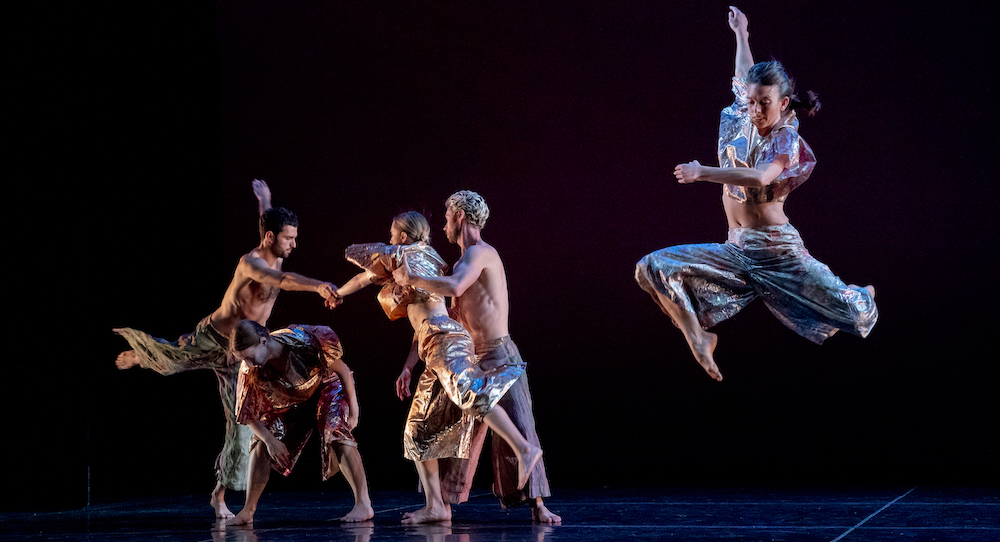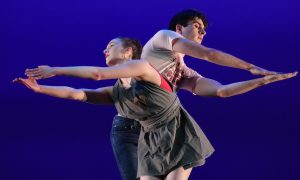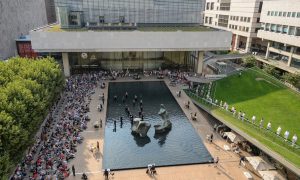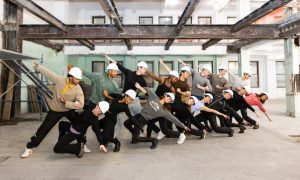The Joyce Theater, New York, NY.
May 28, 2022.
Trisha Brown Dance Company celebrated its 50th anniversary (delayed two years due to Covid) with a week of performances at the Joyce Theater in late May. The program featured two works highlighting the deep collaboration Trisha Brown had with artist Robert Rauschenberg, Foray Forêt (1990) and Astral Converted (1991).
Brown (1936-2017) created for over 40 years and was awarded many times over for her work in modern/post-modern dance. Part of the myriad artists making avant-garde work in the early 1960s, she significantly influences modern and contemporary dance to this day. A founding member of the historically experimental Judson Dance Theater, Brown’s work continued to be creatively strong for the duration of her career.
The Joyce Theater is an excellently intimate venue to view dance, and this performance was no exception, offering every detail to the audience. The first piece, Foray Forêy, uses a brass band lurking out of sight until the end and often barely perceptible to the ear. The sound could certainly be street noise from Eighth Avenue, Brown makes us guess. The dancers move in what could be thought of as silence until the music grows in volume and we realize it’s all part of a carefully constructed experience. The dancing shares similar ideas, the movement morphing pedestrian shapes into recognizable dance moves.
Astral Converted was made to be seen from the balcony seats, as Brown knew that’s where other dancers and future choreographers usually sit. Accompanying the dance are light-filled structures created by Rauschenberg that illuminate as the dancers pass by them. With a score by John Cage, the piece embodies the idea of collaboration well. Some of the choreographic intention was lost by sitting in the orchestra and not the balcony, but watching the world created by the dancers was still enticing.
The magic of live dance was on display, and leaving the theater into the warm NYC night still felt like a gift. For much of pandemic, the Joyce Theater’s sign read, “We will dance again.” It was lovely to see it with the words, “Trisha Brown Dance Company.”
By Emily Sarkissian of Dance Informa.















